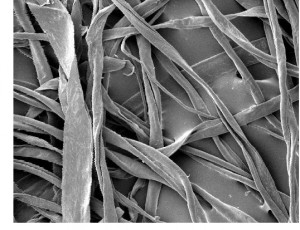SATURDAY, 10 SEPTEMBER 2011
 Up to now, self-cleaning fabrics have been made by treatment with compounds such as N-halamines, which produce oxidising species that kill off bacteria and oxidise toxic chemicals. However, they tend to degrade when exposed to UV light and, because they are only coating the fabric, can be washed off.
Up to now, self-cleaning fabrics have been made by treatment with compounds such as N-halamines, which produce oxidising species that kill off bacteria and oxidise toxic chemicals. However, they tend to degrade when exposed to UV light and, because they are only coating the fabric, can be washed off.The new self-cleaning fabric uses a compound called 2-anthraquinone carbolyxic acid (2-AQC), which is bonded to the cellulose in cotton so is much harder to wash off. 2-AQC, when exposed to light, produces oxidising species such as hydroxyl radicals and hydrogen peroxide which are responsible for the self-cleaning property [1] .
In addition to its other improvements, this new fabric can be easily treated by dipping it in a reaction mixture and agitating it for 24 hours. The simplicity of this method means that it could easily be incorporated into the manufacturing and dye processes. The only drawback is that it is expensive, but other compounds could be used and the team at Davis are already looking for more photoactive anthraquinone compounds [2].
Written by Stephanie Boardman
